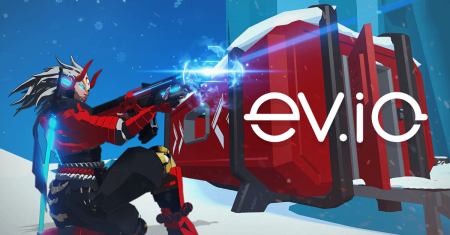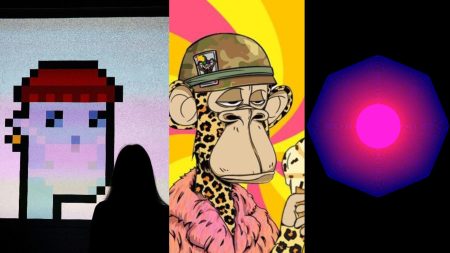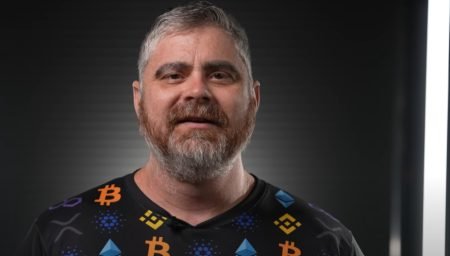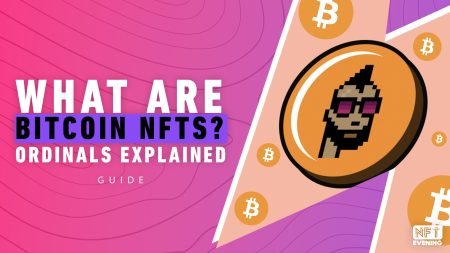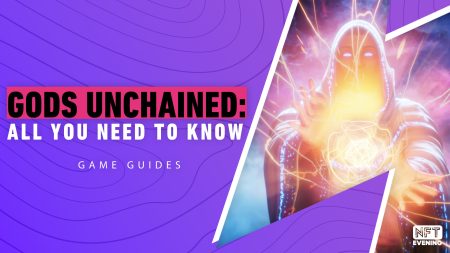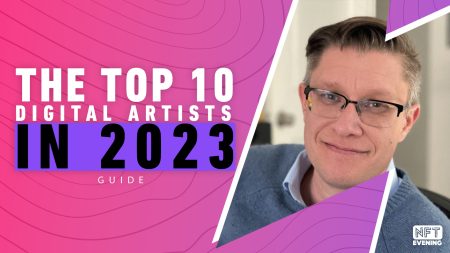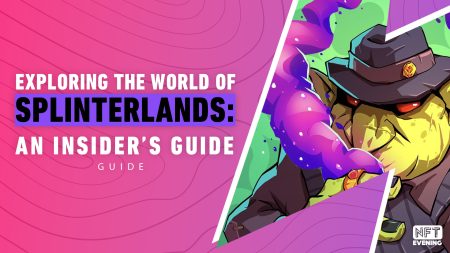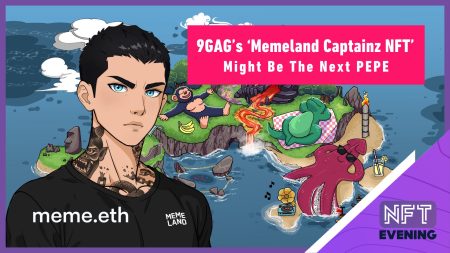With the rise of the NFT art movement, generative art has been gaining increasing prominence. Amid this, Art Blocks, a dedicated generative art platform, steals the show. A first of its kind generative art project, Art Blocks is taking the NFT art world by storm, thanks to its innovative combination of art and technology.
But, what is the Art Blocks NFT project? More importantly, why is it so special?
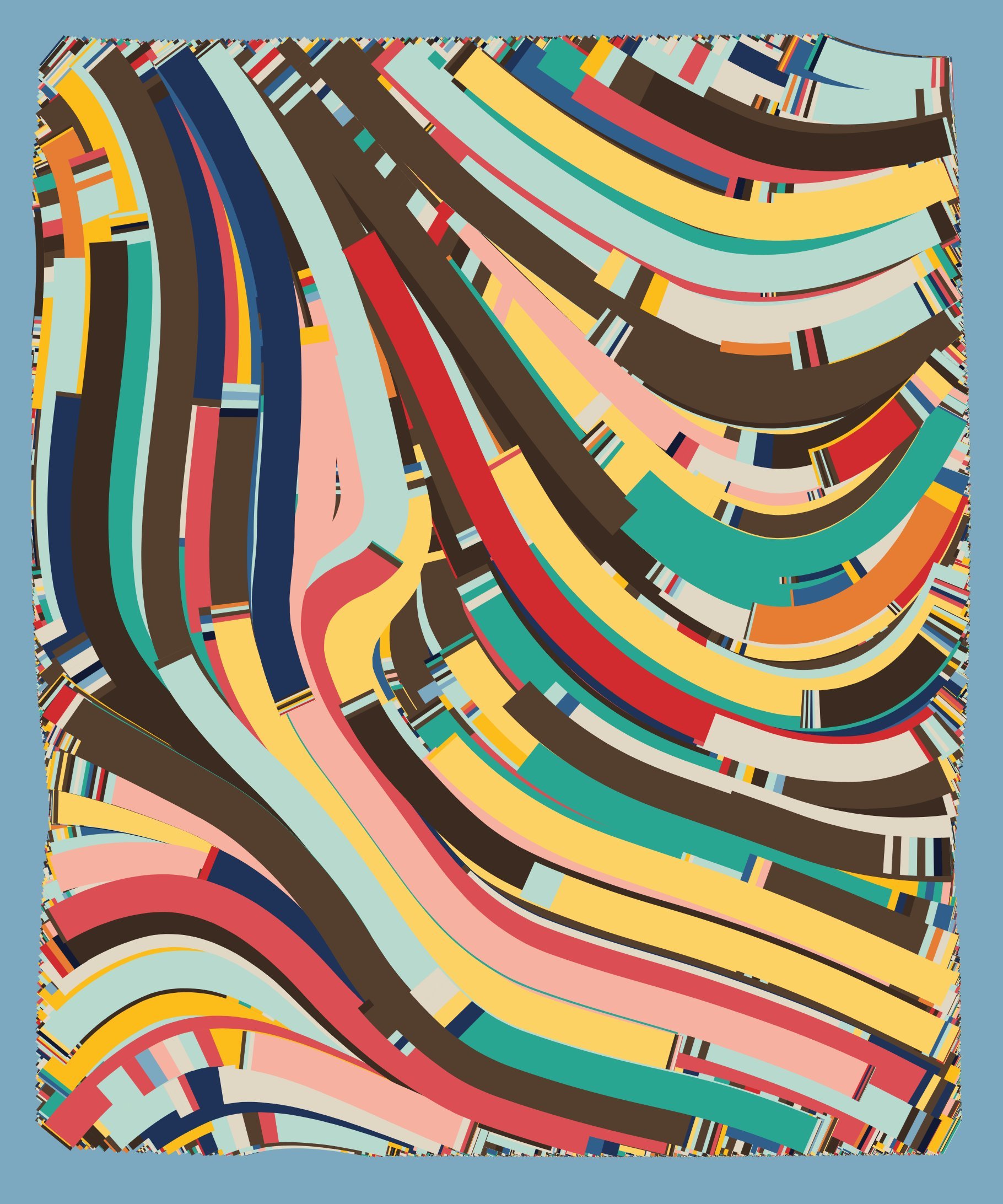
So, What Exactly Is Art Blocks NFT?
Put simply, Art Blocks is an Ethereum-based platform where artists can algorithmically generate one of a kind artworks. According to its website, “Art Blocks is a first of its kind platform focused on genuinely programmable on-demand generative content that is stored immutably on the Ethereum Blockchain.”
“You pick a style that you like, pay for the work, and a randomly generated version of the content is created by an algorithm and sent to your Ethereum account,” it added. “The resulting piece might be a static image, 3D model, or an interactive experience. Each output is different and there are endless possibilities for the types of content that can be created on the platform.”
In a way, these Ethereum NFTs have taken generative art to new heights. Thanks to Art Blocks’ autonomous art creation process, artists can easily randomize NFT art to create both static and interactive artworks. Today, some of the best Art Blocks NFT projects have fetched millions of dollars in the market.
Ringers #109 holds the top spot as the highest-selling Art Blocks NFT after selling for $6.93 million, according to DappRadar data. Ringers #879 is second on the list. It sold for $5.68 million. Meanwhile, Fidenza #313, a part of one of the most sought after Art Blocks NFT projects—Tyler Hobbs’ Fidenza—takes the third spot. It fetched $3.3 million. Needless to say, these sales figures make Art Blocks one of the top NFT projects of all time.
What is Generative Art?
Generative art is developed through creative coding. Essentially, the work’s elements are created by the artist, and their code allows them to be generated with completely unique traits. The end results are truly unique, programmatic art pieces that are never re-minted.
On the Art Blocks platform, collectors can mint generative art NFTs from their favourite projects. After minting, each collector gets a unique version of their chosen project, based on the artist’s creative code. Richard Kim (now a self-entitled Art Blocks Maximalist) has beautifully labelled this entire concept as a ‘generative lottery.’
In essence, generative art is a beautiful blend between human creativity and artificial intelligence. Besides enjoying the artist’s vision, collectors also receive a piece they definitely know is unique. This surprise element makes transactions even more exciting—nobody knows what you’re going to get, not even the artists themselves! Not only does this give collectors an unexplainable rush when minting it also increases the value of each piece.
Generative art comes in many forms, some more complicated than others. However, you can get a glimpse of this system through basic platforms like Silk. Here, you can create your own generative content simply by using your mouse.
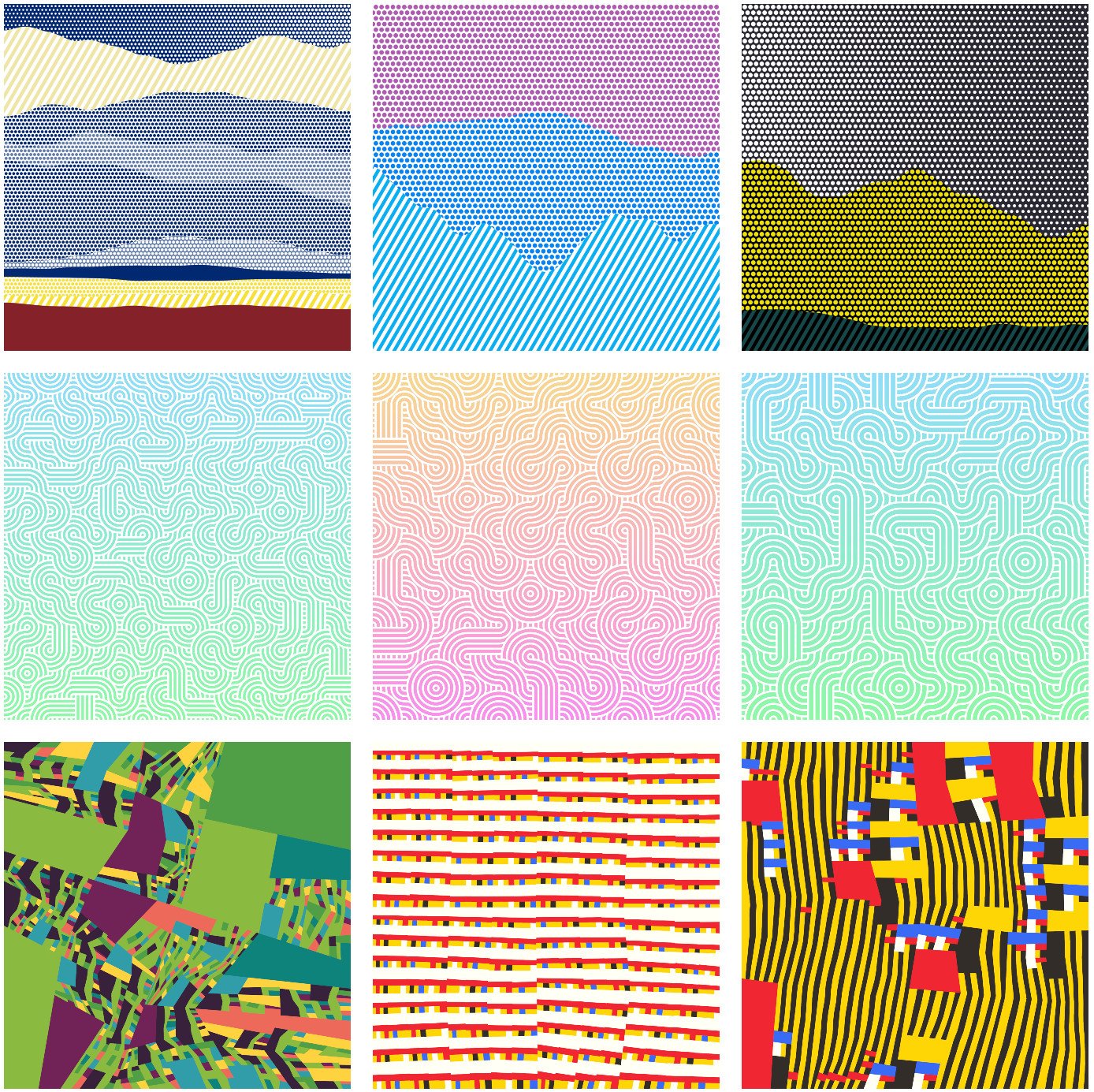
Who Is The Founder of Art Blocks NFT Project?
Artist, collector, and entrepreneur, Erick Calderon—popularly known in the NFT space as Snowfro—is the brains behind the Art Blocks NFT project. While originally in the ceramic tile business, Calderon had always been interested in art, especially generative art. However, it was in 2017 that he forayed into the world of NFTs by purchasing a few CryptoPunks, which were free to claim at the time.
Around the same time, he began experimenting with projection mapping and generative art. Soon after, he began exploring how he could eternalize generative art.
“Right around the beginning of 2018, I was like, okay, this is what I want to do,” he told NFTevening in a recent interview. “I want to create this platform where people that are creating beautiful works of art can do it in a way that has provenance. Because that hadn’t really existed in generative art.”
While developing Art Blocks was no smooth sailing, Snowfro eventually launched the first version of Art Blocks in November 2020.
The History of Art Blocks
In the vibrant landscape of the NFT world, Art Blocks emerged as a groundbreaking project, setting its sails in November 2020 under the visionary guidance of CEO Erick Calderon, also known by his CryptoPunks moniker, “Snowfro.”
Having been an early CryptoPunks NFT collector, Snowfro’s journey into the NFT realm sparked a profound curiosity: could blockchains be harnessed to birth art? With this question dancing in his mind, he envisioned a revolutionary platform where an artist’s entire creative process unfolds on-chain.
Fueled by the proceeds from the sale of a portion of his CryptoPunks collection, Snowfro materialized his vision, birthing Art Blocks, a platform devoted exclusively to generative art. What set Art Blocks apart wasn’t just its showcase of generative art but the immersion of collectors into the very heart of the artistic process. By hosting and allowing interaction with the artist’s generative script, Art Blocks grants collectors a unique output—a personalized piece of art.
When a collector mints an artwork on Art Blocks, they forge a token on the Ethereum blockchain, unique and infused with a seed. This seed becomes the almighty arbitrator, dictating the outcome of the script by determining variables like color, geometry, and rarity features.
What Is Chromie Squiggles?
The inception of Art Blocks witnessed the launch of the Chromie Squiggle collection, a testament to the platform’s commitment to simplicity. Comprising 10,000 distinct pieces, each adorned with a squiggle exhibiting varying colors, opacities, and textures, the collection marked the beginning of a revolutionary era.
Art Blocks swiftly etched its name in the annals of success, surpassing the $100 million sales milestone in 2021. With a community of 9,000 traders and collectors steering its growth, Art Blocks became a testament to the potent fusion of blockchain technology and artistic ingenuity.
Chromie Squiggles by Snowfro.
How Does Art Blocks Work?
You may also be wondering, “how are art blocks created?”. Art Blocks is a digital platform on the Ethereum Blockchain dedicated to producing, selling, and storing unique generative art. The process begins with on-demand generation.
Utilizing algorithms, Art Blocks allows you to explore its website akin to online art shopping. When you discover a piece you like and make a purchase, it doesn’t result in a mere replica. Instead, an algorithm tweaks the formula, creating a one-of-a-kind piece in that chosen style, tailored just for you. The outcome is a digital masterpiece, spanning experiences, 3-D renderings, or cartoons, which remains exclusive and cannot be replicated.
Your NFT is not just a digital asset; it’s a piece of the artistic fingerprint you’ve left on the canvas of Art Blocks. This NFT becomes the basis for your art, generated by a script stored on Ethereum’s immutable blockchain. This unique aspect of blockchain technology ensures the permanence, unchangeability, and unhackability of your digital art, making it a lasting investment that can be passed down through generations.
Steps To Create Art Blocks:
Let’s break down the process of creating your own Art Blocks NFT into actionable steps:
- Step 1: Grasp the NFT Basics Understand the essence of NFTs—cryptographic assets with unique metadata and identification codes. Unlike traditional NFTs, Art Blocks empowers you to mint your NFT. Each NFT is distinct, non-fungible, and a piece of digital art waiting to be born.
- Step 2: Dive into Art Blocks Visit the Art Blocks platform, built on the Ethereum network and ERC-721 compliant. Explore the vibrant world of generative art, where code takes the lead. Your journey begins with a simple preview of the base art piece—the starting point for your exclusive NFT.
- Step 3: Upload Your Code If you’re an artist, submit your code to the Art Blocks platform. This code is the backbone of your generative art, instructing the algorithm to craft a masterpiece. Utilize a JavaScript framework for the transformation process.
- Step 4: Witness the Magic of Generative Art Experience the magic as your code undergoes a metamorphosis. A randomized hexadecimal string, known as the seed, is created, shaping every element of your artwork. This is where generative art comes to life, ensuring each NFT is a unique creation.
- Step 5: Your NFT, Your Way As the purchaser, you’re not just a collector; you’re a co-creator. Engage with the base piece of art and guide the generator to mint your exclusive NFT. Watch as variations emerge, each with its own distinct attributes—perhaps one with a calming green hue and another with a vibrant red.
- Step 6: Embrace Your Unique Creation Celebrate the birth of your Art Blocks NFT, a testament to the fusion of code and creativity. Your journey doesn’t end with collecting; it extends to co-authoring the narrative of generative art on the blockchain.
How Do You Mint Art Blocks?
Art Blocks is an exciting opportunity for digital artists worldwide—but what does it take to become a collector? Let’s go through the process in detail.
There are two ways to get yourselves an Art Blocks NFT—the initial mint or buying from secondary markets.
- Firstly, you can mint NFTs of your favourite projects directly on the Art Blocks website. Every art piece on the platform has a specific number of mints available.
- Once a collection runs out of its mint limit, you will no longer be able to mint a new work. Luckily, curated collectibles are released quarterly, so collectors can prepare for minting ahead of time.
- Every time you mint an NFT, that particular project will generate a unique iteration for you. Remember, you won’t know what you’re getting until after the mint. Apart from this, there’s another drawback in going this route—you will likely have to pay exorbitant gas fees.
Alternatively, you can go for the second option—buying from a secondary marketplace like OpenSea. This way, you can not only avoid gas wars but also know exactly what you’re minting.
Minting Mechanism:
- The minting process occurs during the launch of a new Art Blocks collection, allowing buyers to mint new pieces by purchasing NFTs.
- NFTs contain a hash—a cryptographic algorithm determining the unique output, adding an element of surprise for buyers.
- Users need a MetaMask wallet and Ethereum (ETH) to participate in the minting process.
- GWEI (gas price) represents the payment for miners to confirm NFT transactions, with higher gas prices increasing the likelihood of transaction prioritization.
- After the collection concludes on Art Blocks, pieces are bought and resold on the OpenSea NFT marketplace.
How To Get Art Blocks NFT On Metamask?
Firstly, make sure you have a digital wallet like MetaMask and enough ETH to purchase the NFT of your choice. Once you’re all set, here are the steps to mint an NFT on Art Blocks:
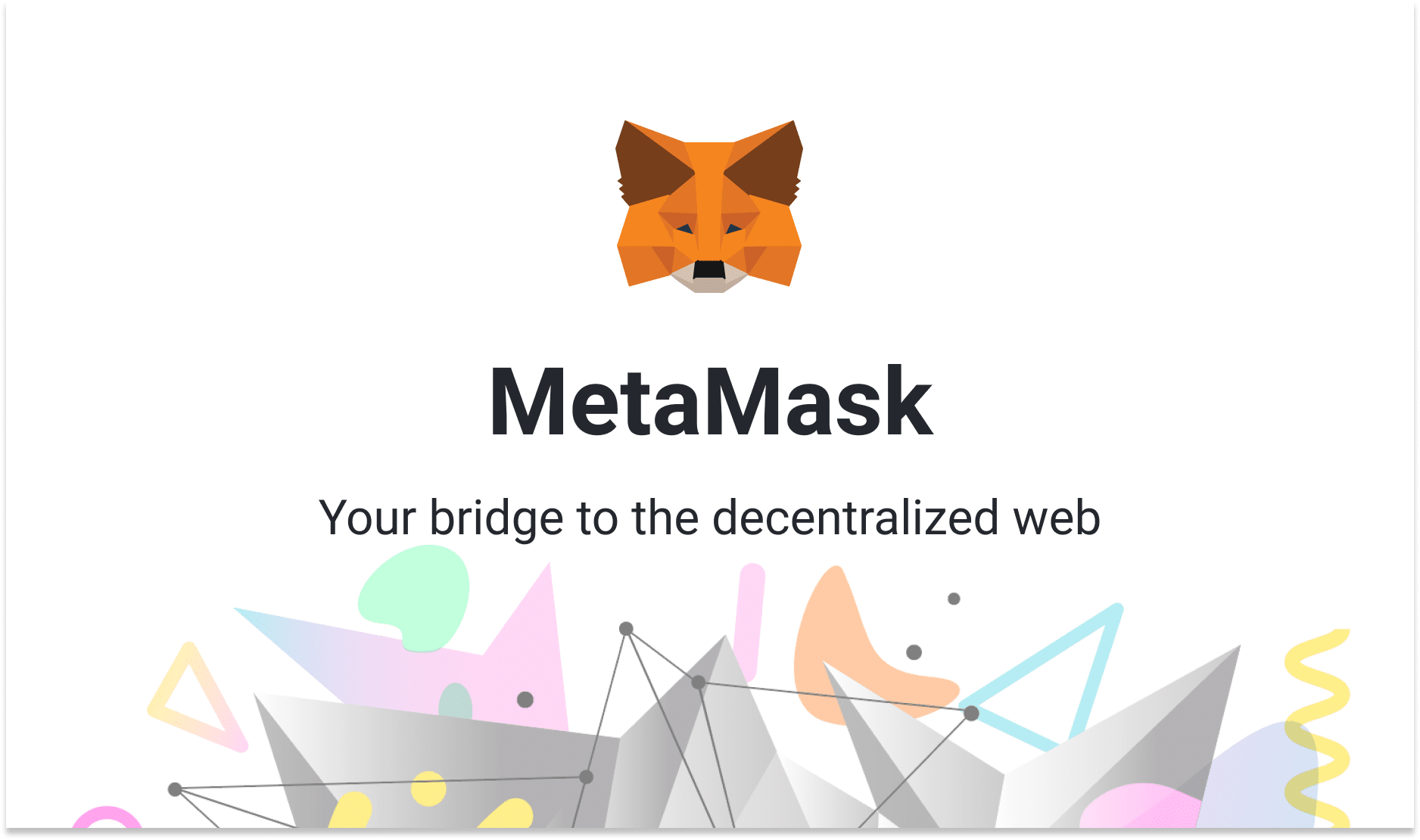
- Firstly, connect your digital wallet to the Art Blocks NFT platform. The team highly recommends choosing MetaMask due to their friendly linking system. Ideally, you should transfer or buy Ether ASAP to have your MetaMask wallet ready for the next live drop.
- Then, visit the project you want to mint. Make sure the project is “open”, meaning, still available for minting.
- Once your wallet is connected and the project has any mints left, you will be able to see a “purchase” button in its description.
- Click the “purchase” button and follow the prompts to complete your transaction. Art Blocks will now mint a unique generative art NFT for you, which will show up in your wallet!
The Best and Most Famous Art Blocks NFT projects
Now that we have covered the basics of the platform, let’s take a look at some of the best art blocks NFT projects.
Ringers by Dmitri Cherniak: The collection features 1,000 generative art NFTs made up of “strings and pegs”. It was created by Canadian artist and coder, Dmitri Cherniak, who uses “automation” as his primary art medium. As previously mentioned, Ringers #109 is currently the most expensive Art Blocks NFT. The collection currently has a floor of 60 ETH.
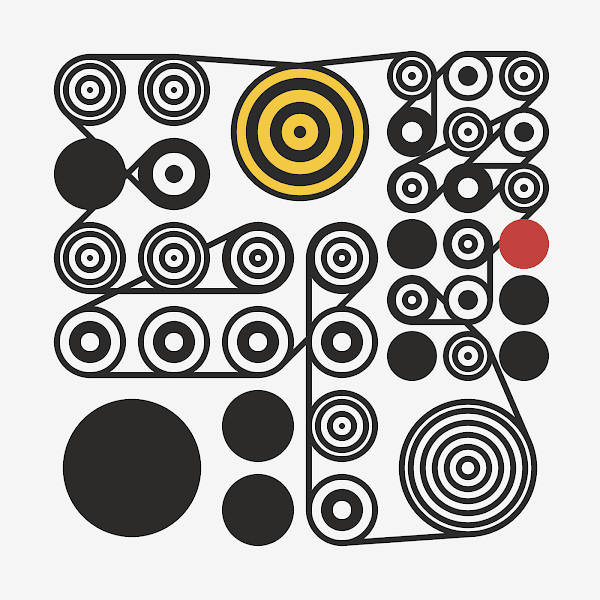
Archetype by Kjetil Golid: Archetype is another highly sought after Art Blocks collection. Created by Kjetil Golid, Archetype “explores the use of repetition as a counterweight to unruly, random structures”. With just 600 NFTs in all, the project’s floor is presently at 18 ETH.
Elevated Deconstructions by luxpris: Created by the creative technologist, luxpris, Elevated Deconstructions is a limited collection of 200 art pieces. The project is a “study in reduction based around several repeating elements”. As one of the popular projects on Art Blocks, the least expensive Elevated Deconstructions NFT costs 23 ETH.
Fidenza by Tyler Hobbs: Tyler Hobbs’ Fidenza NFT collection is easily one of the most popular Art Blocks NFT projects. It is also the first project on the platform to make a three-figure ETH sale. The collection features 999 NFTs. It sold out in under 25 minutes for 0.17 ETH. Today, you’ll have to shell out at least 88 ETH to own one of these iconic art pieces.
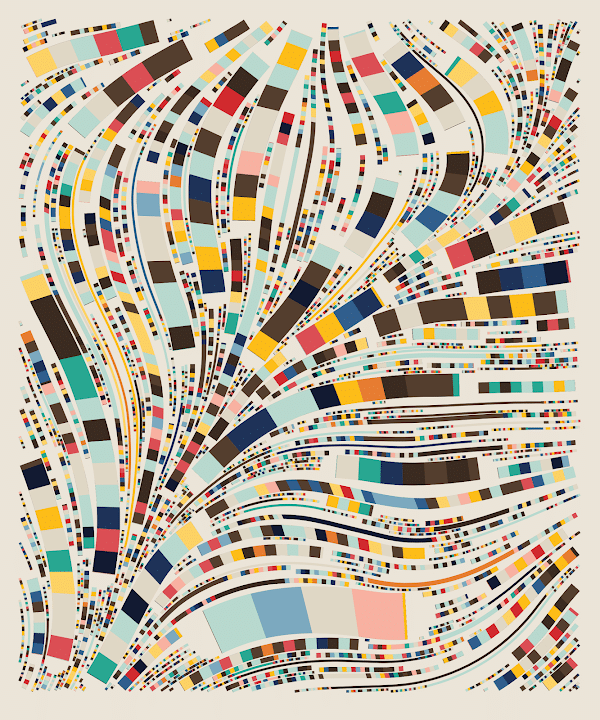
How expensive are Art Blocks NFTs?
Initially, the minting price was quite accessible—around 0.10 ETH for most projects. However, because of the surge in prices on the secondary market, a lot of people saw a cash-grab opportunity in Art blocks. It attracted a lot of people trying to flip (buying the pieces of art with the clear intention of selling them right after). Needless to say, gas wars are pretty common during initial mints.
In order to avoid that, Art blocks successfully moved to the “Dutch Auction”. This is where prices start higher (around 1 ETH), and decrease every 10 minutes. That way, those in a hurry to mint first get their chance —at an extra cost, of course.
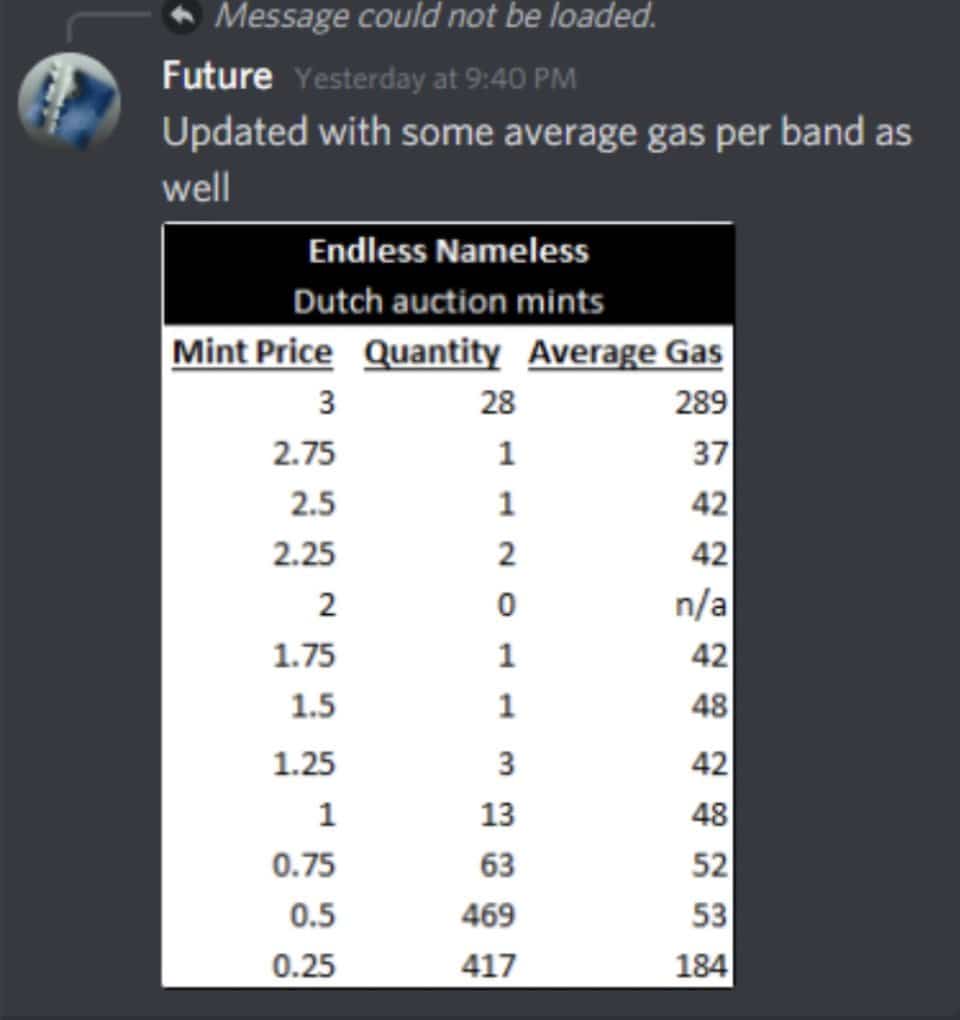
On the secondary market, minting prices can vary widely. Curated and Playground collections have prices ranging from 0.1 ETH to 4200 ETH.
Collectors might find some pieces available for as low as 0.0001 ETH in the Factory category. However, remember that artists from this category are not curated, and almost anyone can submit their work here.
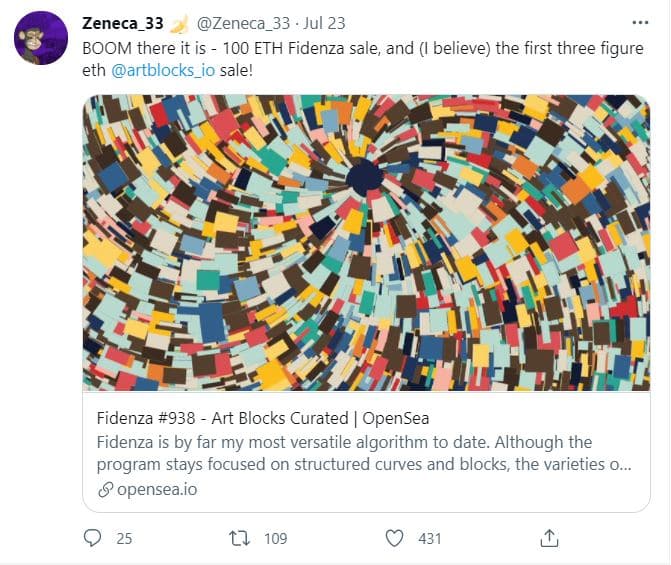
Art Blocks NFT Gas + Mint Fees
Before you start minting your first Art Blocks piece, know that it will cost you two different fees:
- Gas is the price you pay for any Ethereum network transaction. The unit of measure for gas is called GWEI; generally, 200 GWEI is the equivalent of about 0.1 ETH. However, transaction costs fluctuate, so check the gas price before minting!
- Mint cost, which is the price you actually pay for an art piece on the Art Blocks platform. Each artist sets their own mint price, which you can see on the project page details section.
Why Art Blocks Are Popular: A Uniquely Artistic NFT Project
From music and visual arts to tradeable cards and ticketing, the NFT market now offers endless possibilities. Amid this, Art Blocks stands apart with its focus on high-quality generative art. To be sure, in a short span of time, Art Blocks has become the go-to place for creators and fans of generative art.
Art Blocks Artists Curation
The curation board system allows generative artists to grow with minimal investment. Although the verification process is time-consuming, curated artists receive plenty of privileges.
To begin with, the Art Blocks NFT team announce new project drops on the official Discord server. This free form of exposure is a gold mine for artists; it also connects them to passionate collectors, increasing their chances of selling out collectibles.
Sotheby’s Auction off Art Blocks NFTs
The NFT market has quickly embraced Art Blocks, with curated sales now easily fetching millions of dollars. In fact, the prestigious Sotheby’s auction house has even featured the top 19 curated projects of the platform as part of a special Natively Digital event collection last year.
As a consequence, Art Blocks had an impressive 500% surge in sales—and the numbers have only gone up. Today, Art Blocks has come to be a clever resource for NFT investments. As the platform continues its successful run, the curated collections are only going to become more valuable. As more NFT marketplaces continue to pop up, one thing is certain: Art Blocks has paved its way to success and is definitely here to stay.
Is Art Blocks On Chain?
Art Blocks stands out in the NFT space for its commitment to being on-chain, ensuring decentralization and immutability. Unlike many NFTs hosted on centralized servers, Art Blocks leverages the Ethereum Blockchain for true decentralization.
When you purchase an Art Blocks NFT, you’re not accessing a file hosted on a server; instead, the generative art is rendered in real-time through a script living on the Ethereum blockchain. This on-chain approach means that the art’s code and token hash, essential for its creation, is independently accessed directly from the Ethereum blockchain. This allows the recreation of the art even if Art Blocks ceases to exist.
Advantages of Being On Chain:
- Decentralization: Art Blocks ensures decentralization by storing generative algorithms and essential token information on the Ethereum blockchain.
- Immutable Preservation: The art is immutably preserved on the blockchain. This guarantees its existence regardless of the Art Blocks platform’s future.
- True Ownership: With on-chain NFTs, collectors truly own their assets, as the ownership is recorded on the Ethereum blockchain.
- Open Source Recreation: Efforts like the community-driven open-source project make it easier for anyone to recreate Art Blocks projects from on-chain data, enhancing accessibility.
- Resilience of Dependencies: While some projects use external libraries, Art Blocks is selective. It ensures widely distributed and durable dependencies like p5js, stored in the GitHub Arctic Code Vault.
Art Blocks’ mission extends beyond its platform, aiming to contribute to the public record of generative art on the internet as long as computers have access to the Ethereum network.
Types Of Art Blocks Projects
As of now, Art Blocks features four types of unique projects: Curated, Factory, Playground, and Pioneer.
Curated
If you’re a newbie to the Art Blocks platform, the curated collection should be your first stop. Here, you’ll see the top curated NFTs hand-picked by the Art Blocks team themselves.
To make it to the coveted collection, each project has to go through a rigorous verification process that might take up to two years. Indeed, the projects that make it to the list are superior in their “technical innovation and aesthetic beauty.”
In short, every curated set best represents Art Blocks’ vision. The team releases a new set of generative art every quarter, allowing collectors to mint some of the best NFTs from top creators in the world.
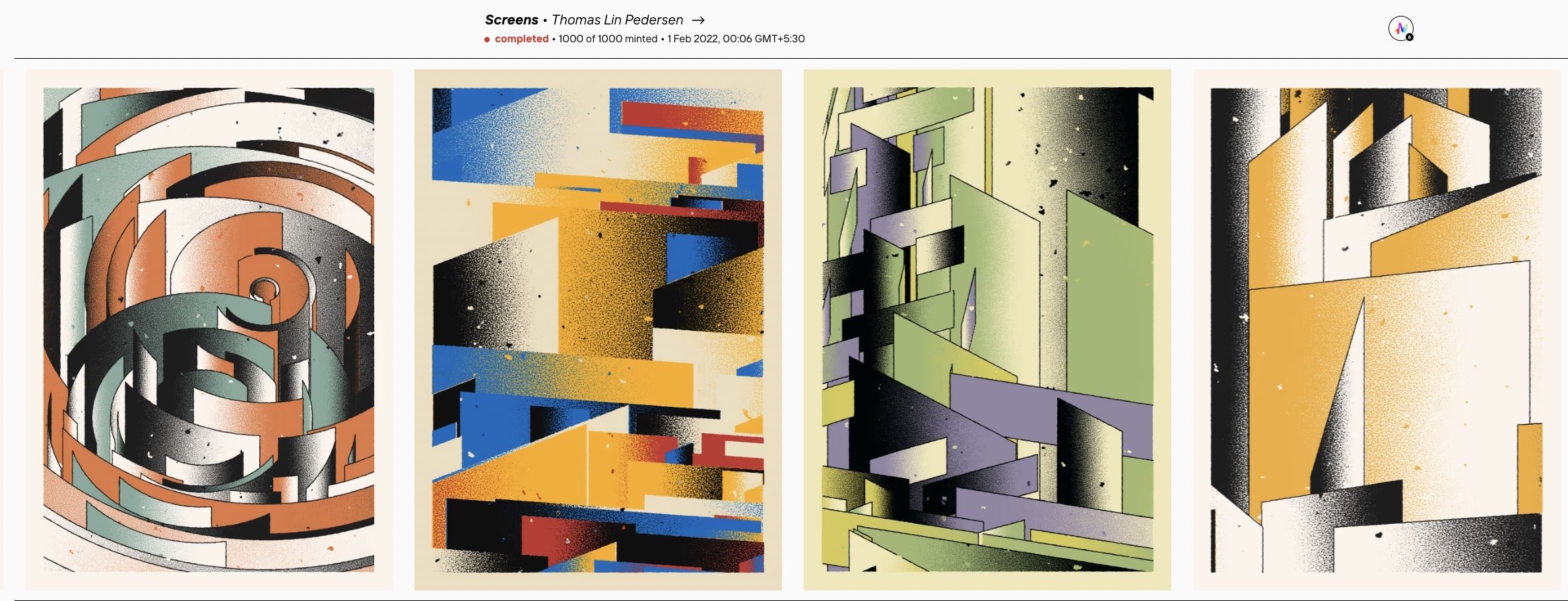
Playground
Artists whose works are featured in the Curated category can then test their imagination using the Playground section. To explain, they can release all their subsequent NFTs in the Playground section. Unlike curated sets, these projects aren’t as thoroughly verified by the Art Blocks team.
That said, Playground comes with some basic rules too. Firstly, artists can only release one project at a time. Besides, the works must meet certain quality standards. Nonetheless, the team encourages Playground artists to experiment.
Next, if any specifications change after publication (mint size, price, etc.), they must reapply for another curated project to join Playground again. Lastly, artists must wait at least one month between two projects. However, waiting for years to get into Art Blocks isn’t exactly ideal—and that’s how the Factory category was born.
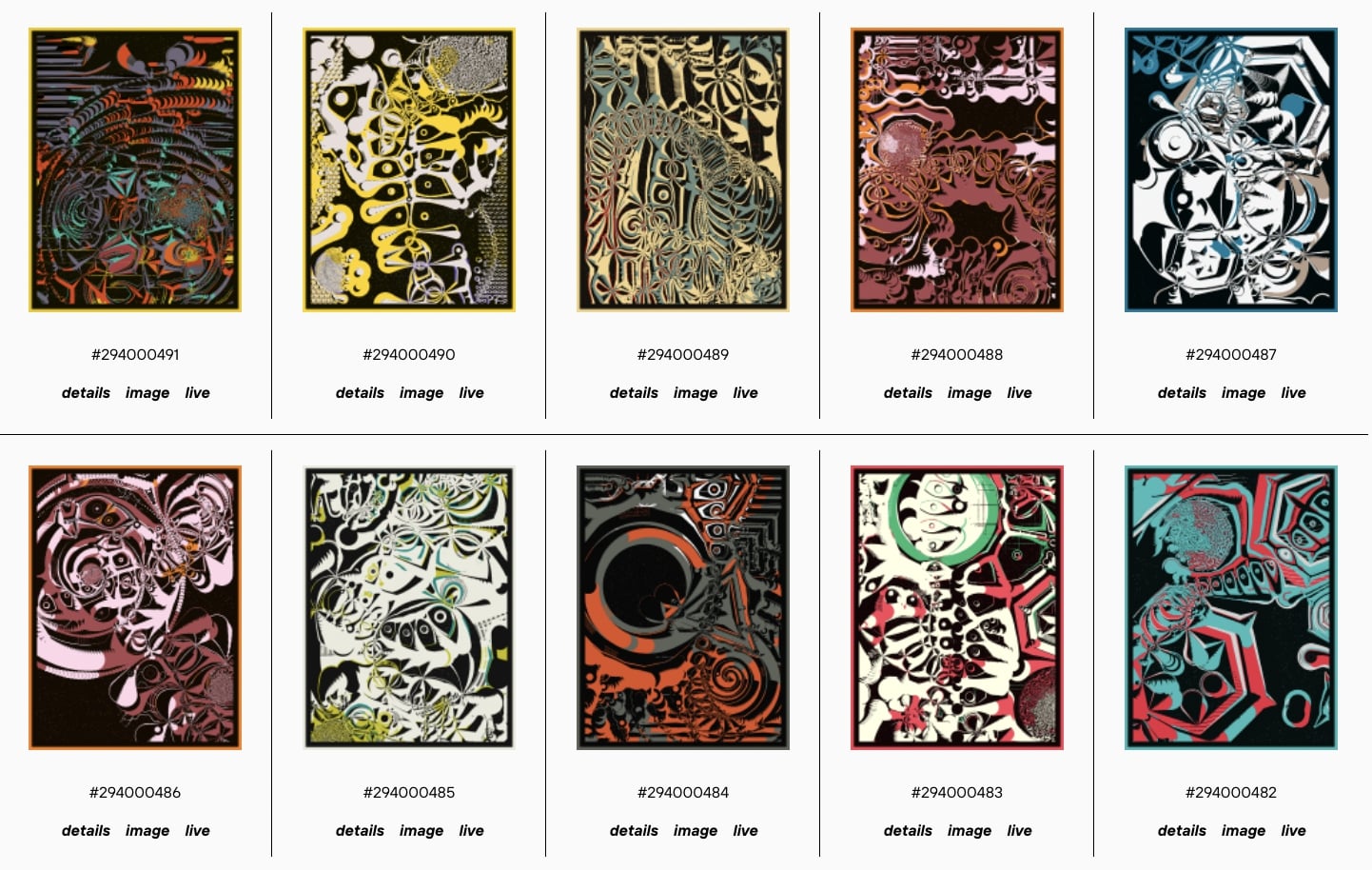
Factory
When the Art Blocks team became overwhelmed with application requests for Curated projects, they knew they needed an upgrade. This is where Factory projects came into the picture. The category is for all the artists who don’t want to wait to get into the curated list or whose application was rejected.
Artists can launch Factory projects quicker by avoiding the strict verification process involved in Curated sets. Here, the platform only checks the functionality of a project before approval—that’s it!
Unfortunately, joining the Factory category comes with a downside too: artists can’t join the playground and factory at the same time. What’s more, the Art Blocks team doesn’t check Factory projects thoroughly in terms of originality—this means that Art Blocks won’t manage copyright conflicts caused by artworks published here.
Pioneer
Finally, the Pioneer collection, as the name sounds, features artworks from artists who were the first to generate art using computer programs. This is where you’ll find art from all the pioneering artists who made generative art what it is today.
Art Blocks & Its Charity Efforts
Remarkably, Art Blocks’ top artists are also heavily into giving back to the community and charity. For instance, artist Bryan Brinkman donated one of his NimBuds NFTs (NimBuds #332) to the Art Gallery Auction House. He donated the 1.25 ETH raised for carbon offsets.
Fidenza is another remarkable example of how Art Blocks is making a huge difference right now. Artist Tyler Hobbs donated an outstanding total of $61,500 to three foundations he deeply believes in. These include Girls Who Code, Processing Foundation, and AGE of Central Texas.
And if that seems like a lot, let’s just remember Stefano Contiero’s insane $750,000 donation to The Ocean Cleanup, a wildlife conservation charity. His Playground project Rinascita sold out in a Dutch Auction with a starting price of 1.11 ETH.
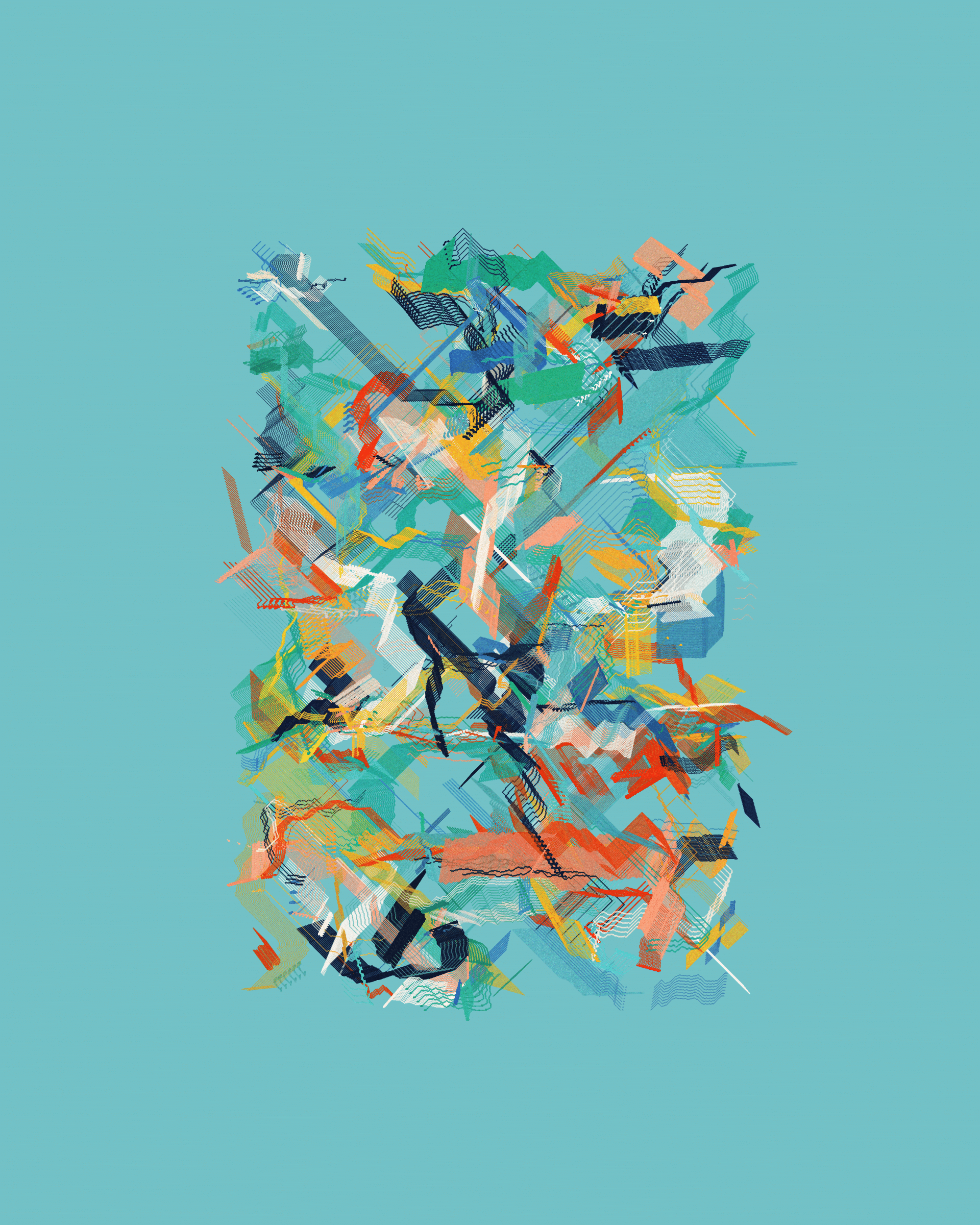
All in all, in their first year alone, Art Blocks facilitated nearly $50 million in charitable donations. Besides, the platform has been buying carbon offset credits to reduce its environmental impact. So far, it claims to have offset 20,230 tonnes of CO2.
All investment/financial opinions expressed by NFTevening.com are not recommendations.
This article is educational material.
As always, make your own research prior to making any kind of investment.

